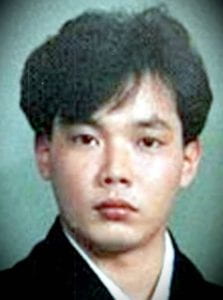
True Crime Vol. XXXIII: Hisashi Ouchi
By: Kendall Zuniga
How much do you know about Radiation? If you don’t know much about it, here’s a quick breakdown of radiation. Radiation is energy that comes from a source and travels through space at the speed of light, this energy has an electric field and a magnetic field associated with it, and has wave-like properties also known as “electromagnetic waves”. When Exposed to too much radiation at once, radiation sickness will occur. This can cause skin burns, loss of appetite, Fatigue, fever, nausea, vomiting and diarrhea.
Hisashi Ouchi is a victim of a terrible mishap in a Nuclear power plant in Tokyo, Japan, But Ouchi is known as the man to live 83 days of hell because of the amount of radiation he encountered while working that day at the plant. The total amount of radiation a human can encounter is about 4-5 sieverts and even then that amount is considered lethal. This mishap took place when Ouchi was helping a colleague pour liters of uranium into a big metal vat at the Tokaimura Nuclear Power Plant in 1999.
None of the men working alongside Ouchi had received any training prior to carrying out the delicate task that reportedly had 16 kg of uranium, this included Ouchi who had taken this particular job out of fear of upsetting his boss.
When funneling the Uranium into the tank, Ouchi was taken aback by the bright flash of a blue light at the bottom of the tank. He didn’t know that the tank had reached a critical point and began releasing dangerous amounts of neutron radiation and gamma rays into the room’s atmosphere. After being exposed to the radiation, Ouchi was taken to the hospital even though he didn’t seem to be in any pain. When arriving at the hospital, doctors had found that Hasahi Ouchi had almost no white blood cells left in his body, doctors studied Ouchi to see and understand just how much radiation had attacked his body. Doctors discovered that Ouchi had absorbed about 17 sieverts of radiation into his body, the highest level of radiation for any living being to absorb Whereas the emergency responders of Chernobyl only encountered and died from 0.25 sieverts of radiation.
Within a day, Ouchi’s condition had become worse. His abdomen had begun swelling and he now required oxygen for his breathing. As days went by Ouchis’ condition only continued to get worse, when nurses would remove medical tape from his body, Hisashi’s skin had begun coming off with it. He could no longer breathe, eat, or move on his own, two months after the incident Hisashi’s heart had stopped, though doctors were soon able to revive him, Hisashi’s heart continued to stop two times after that same day, both times spanning about 40-45 minutes. On Hisashi Ouchi’s 83rd day in the hospital, his heart would stop one last time and he was pronounced dead on December 21st, 1999 at 11:21pm, he was 35 years old. Throughout his entire painful journey, Hisashi’s wife and family were by his side doing their best to support him. They’d sit in the waiting room every day for all 83 days, folding paper swans as a representation of their prayers of hope. They folded an estimated 10,000 paper cranes.
After Hisashi’s death, an investigation was launched by the Japanese government to try and find an answer as to why inexperienced employee’s were working on such a dangerous task. Inadequate regulatory oversight, lack of an appropriate safety culture, and inadequate worker training and qualification were found to be the main causes of this accident occuring. Because of the company’s lack of responsibility, not only did Ouchi and his two fellow coworkers lose their lives but it was found that an additional 21 lives were lost due to the exact mishap occurring between 1953 and 1997. Six officials from the company that operated the plant were charged with professional negligence and violating nuclear safety laws. As of 2003, a court gave them suspended prison terms, and the company and at least one of the officials also were assessed fines.
